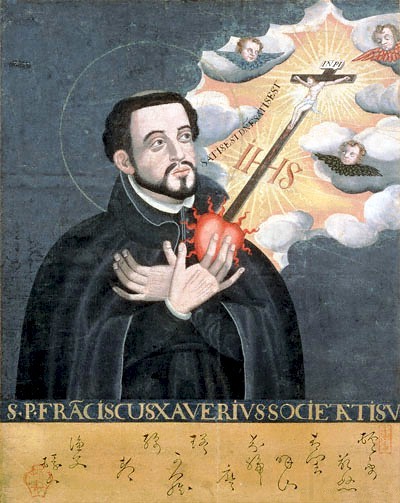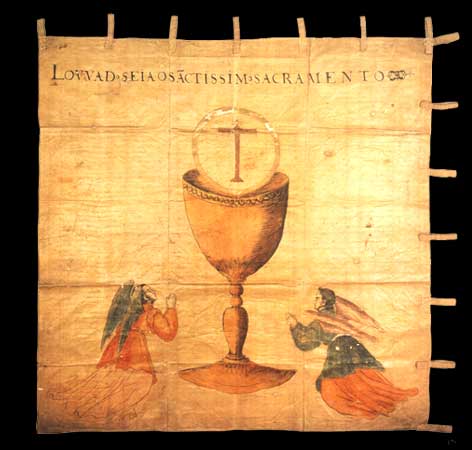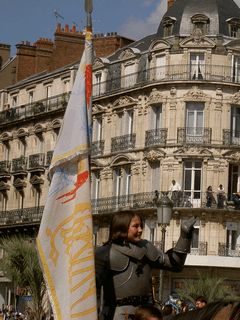Desperate War of Japan in the Pacific
Map of Japan printed in 1595
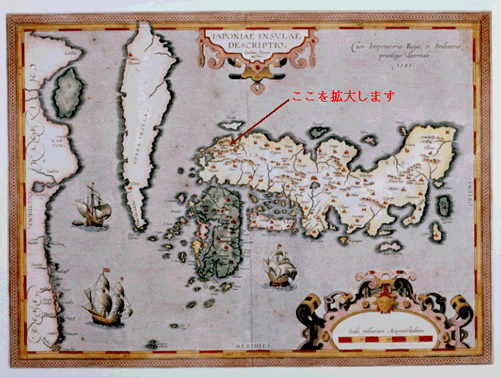 |
Portuguese ships came to Kyushu in the late of 16th century. They used a voyage route that Japanese and Chinese merchants communicated between Luzon and Ryukyu (Okinawa). Their aim was to get silver in Japan. Silver was the most important currency in China. Western merchants could buy anything they wanted in China for silver. The map shows a silver mine in Japan which was printed in Antwerp in 1595[11]. A dutch ship came to Bungo on 19 April 1600. The ship was called Liefde. William Adams was a navigator of the Liefde. The Liefde crossed the Pacific Ocean not so as to encounter hostile Portgues and Spanish ships. Hashimoto supposed how the Liefde sighted islands of Japan considering moutains height[12].
Japanese people were curious western culture and weapon in the 16th century. Japanese lords enjoyed byoubu paintings of western ships or something. These sites are some examples in museums.
Byoubu
Kyushu National Museums
National Museum of Japanese History
Kobe City Museum
A Church in Kyoto
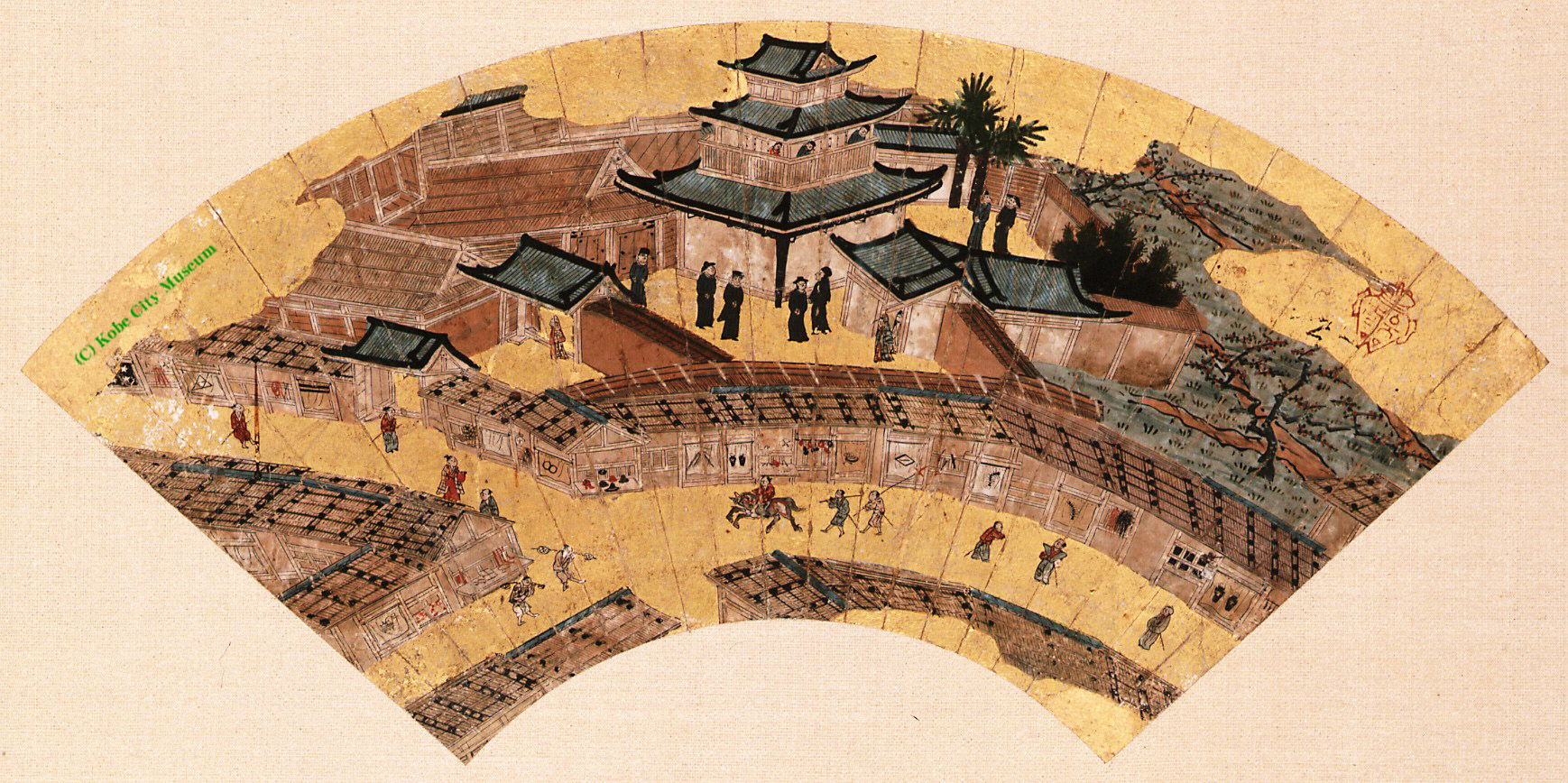 |
| A Church in Kyoto |
A church was built in Kyoto in 1567. Japanese people called it Nanbanji. Lord Oda Nobunaka approved building it. The picture was used for a Japanese fan originally. Sucessor of Oda Nobunaga, Toyotomi Hideyoshi was advised by Portgul mission that Spain would conquer Japan after sending Christian missions like the Philippines. So Hideyoshi and Ieyasu banned Chrisianiy all over Japan, though they hoped trade conventionally. But a revolt in Shimabara in Kyushu occurred fully controlled trade, sakoku in Shogunate Tokugawa Iemitsu.
Oda Nobunaga(1534-1582)
Tokugawa Iemitsu(1604-1651)
Spain failed to keep Netherlands Although Meiji Government allowed Christianity carefully because they remebered Amakusa or Shimabara Revolt in 1637, the Christianity did not spread wide like the 16th century. Educated commons in terakoya were not interested in a strange religion, 'the hope of the resurrection of the dead' any more.
Terakoya
A Russian ship leaving Nagasaki
A flag of double-headed eagle
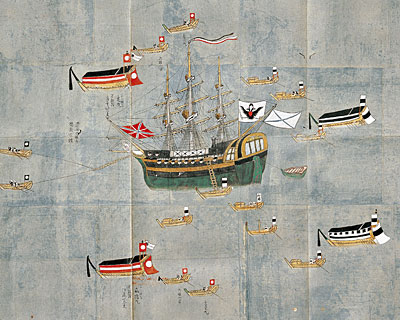 |
New waves of imperialism propagated to Japan in 19th century. One of them was Russia, and the other was US. China had to learn challage of old Imperialism UK and France. Japan had to learn threats of new comers, Russia and US. Both nations were super powers after WWII. A painter of Japan showed a russian ship departure from Nagasaki. Rezanov was on the ship. Government held him for 4 months in Nagasaki. It seems that the painter was interested in a flag of Russia. He knew nothing probably about the origin of the flag, double-headed eagle, the Empire of Rome. While the symbol of the US is a eagle. It seems the Roman Empire was a kind of Russian and American origin. The spirit of the Christianity became a mother of communism and capitalism.
Russian ship syukko no zu
Nikolai Rezanov(1764-1807)
Western community
Japan became a competitor of them in 1904 and 1941. US and Russia broke up the military power of Japan in 1945 after all. Japan would compete with them without knowing their spirit deep. Japan missed why US and Russia grew a power. Japan ignored that both of the roots were Christianity. The Chiristinanity had splendid wisdom to control people, and it soothed wild sentiment in a sense.
The Christians persuade neighbors to preach. And people began a dialogue. They gathered and prayed in a church, at first. Christian monks mediated eternal life and prepared modern science. Citizens gradually developed various communities in their town. The modern community is a mother of innovation. There is no such a community in a Japanese town, though a community called 'yui' in a village.
|



